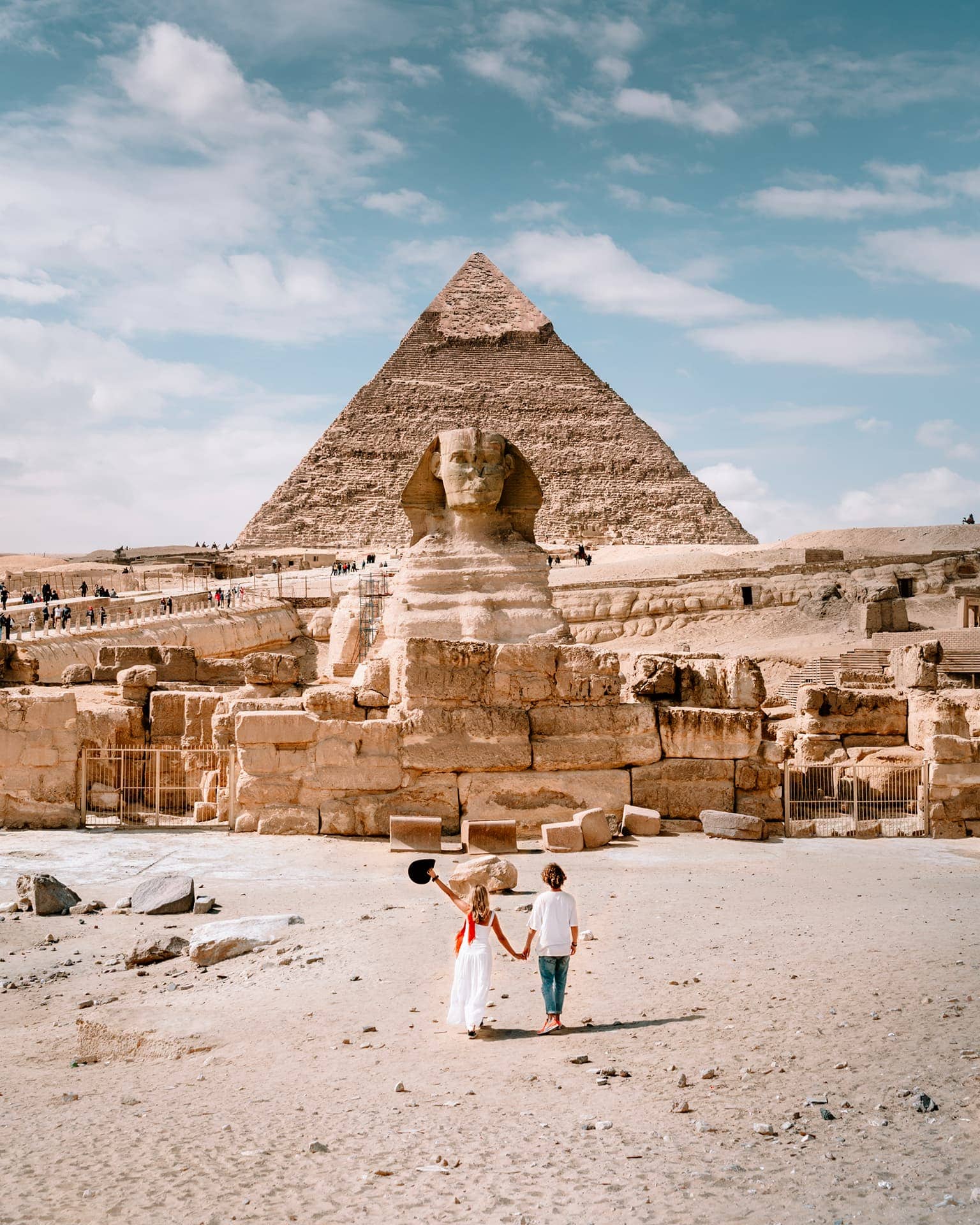The Pyramid Complex of Neferefre is an intriguing archaeological site situated at Abu Sir, Egypt, representing the funerary complex of Pharaoh Neferefre (also known as Raneferef) of the Fifth Dynasty during the Old Kingdom period (circa 25th century BCE). This complex is unique due to its unfinished state, providing valuable insights into ancient Egyptian construction techniques and royal funerary practices.
Key elements and features of Neferefre's pyramid complex include:
1. **Pyramid**: Neferefre's pyramid, known as the "Ba-Soul of Ra Endures," was intended to be a substantial monument comparable in size to other Fifth Dynasty pyramids. However, construction was abruptly halted, likely due to the pharaoh's premature death. The core structure of the pyramid was made of limestone blocks, and its unfinished state offers a glimpse into the early stages of pyramid construction.
2. **Mortuary Temple**: Adjacent to the pyramid, the mortuary temple served as the central hub for religious rituals and offerings dedicated to the deceased pharaoh. While the temple's exact layout and decorations are not fully known due to the incomplete nature of the complex, it would have contained courtyards, halls, and chambers adorned with reliefs depicting scenes from Neferefre's reign and offerings to deities.
3. **Causeway**: A causeway linked the mortuary temple to the valley temple, situated closer to the Nile River. The causeway was likely adorned with scenes of Neferefre's journey to the afterlife, although the decorations would have been incomplete due to the pyramid's unfinished state.
4. **Valley Temple**: The valley temple served as the entry point to the complex from the Nile and played a crucial role in the pharaoh's funerary processions. This ceremonial structure likely included a landing stage or quay for boats and would have served as an administrative center for managing offerings and rituals associated with the cult of Neferefre.
5. **Subsidiary Structures**: Surrounding Neferefre's pyramid, there may have been smaller pyramids or mastaba tombs intended for the burial of royal family members or high-ranking officials, although the exact layout and extent of these structures remain speculative due to the complex's unfinished state.
The Pyramid Complex of Neferefre provides archaeologists and Egyptologists with a unique opportunity to study the planning and construction of an ancient Egyptian royal tomb that was left incomplete. This complex sheds light on the challenges and techniques involved in pyramid building during the Old Kingdom period and offers clues about the organization of royal funerary rituals and the significance of pyramid complexes in ancient Egyptian religious beliefs.
Despite its incomplete status, Neferefre's pyramid complex remains a significant site for understanding the architectural and cultural developments of the Fifth Dynasty and the broader context of ancient Egyptian mortuary practices. Ongoing excavations and research continue to uncover new details about this enigmatic monument and its place in the history of ancient Egypt.
 English
English











